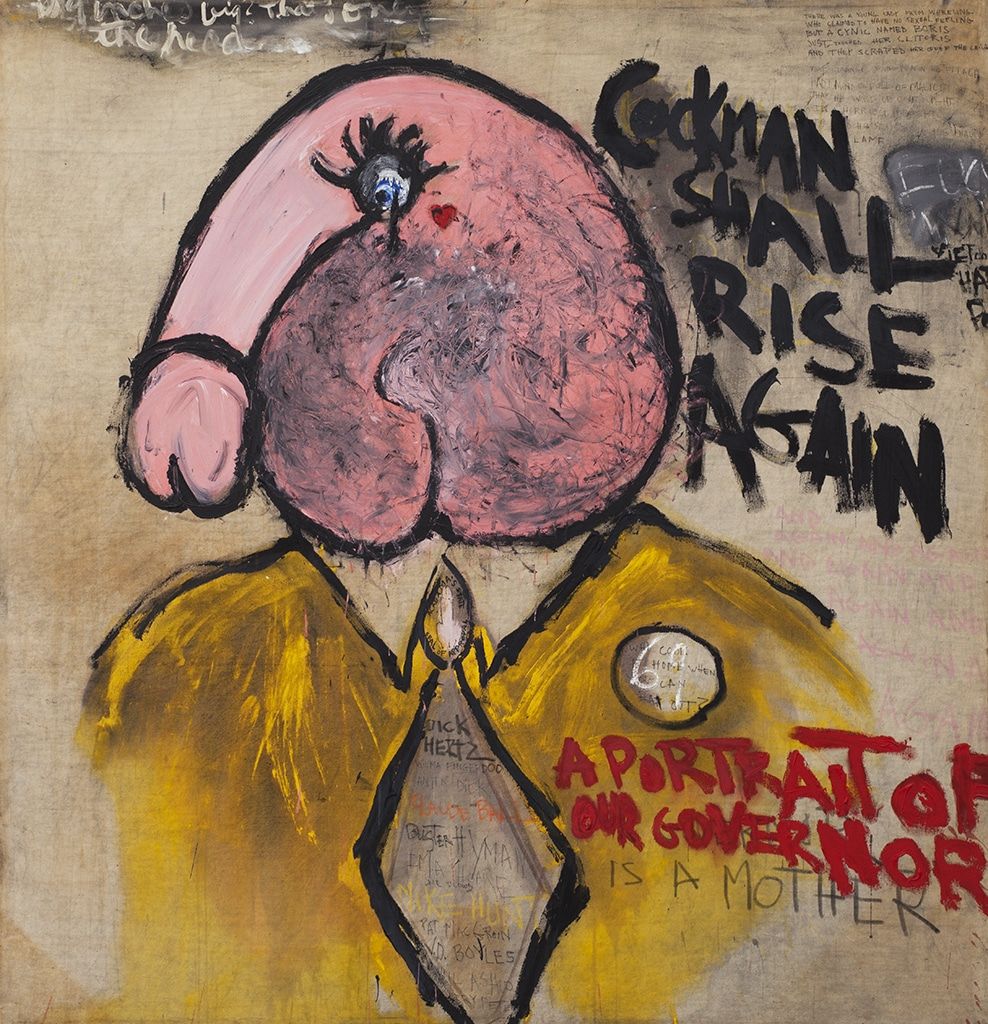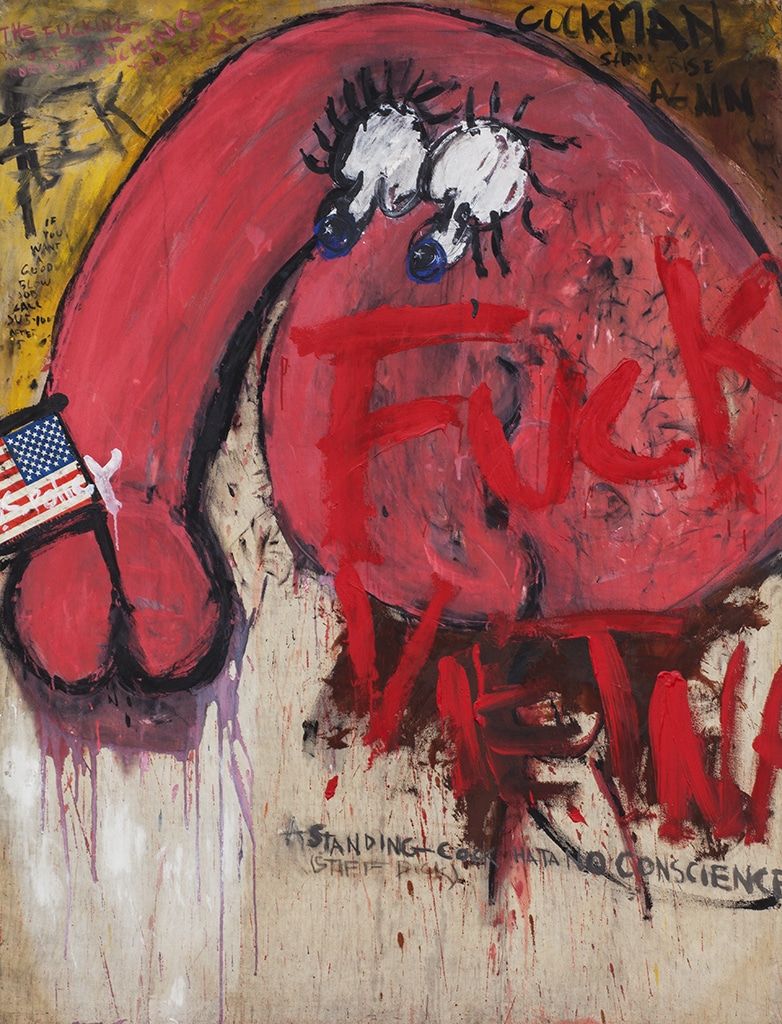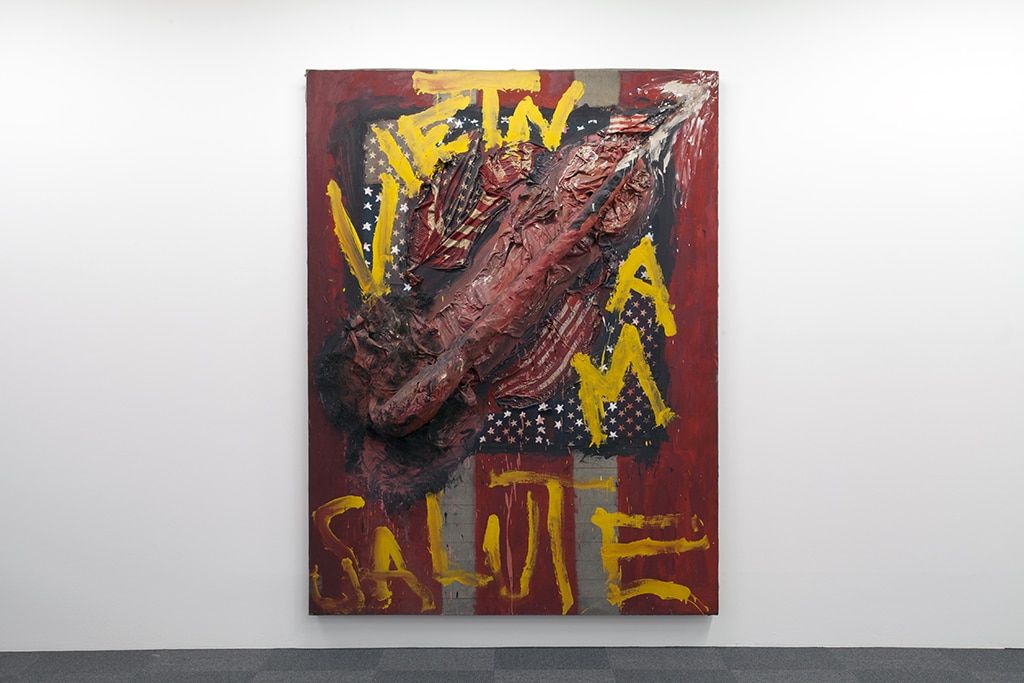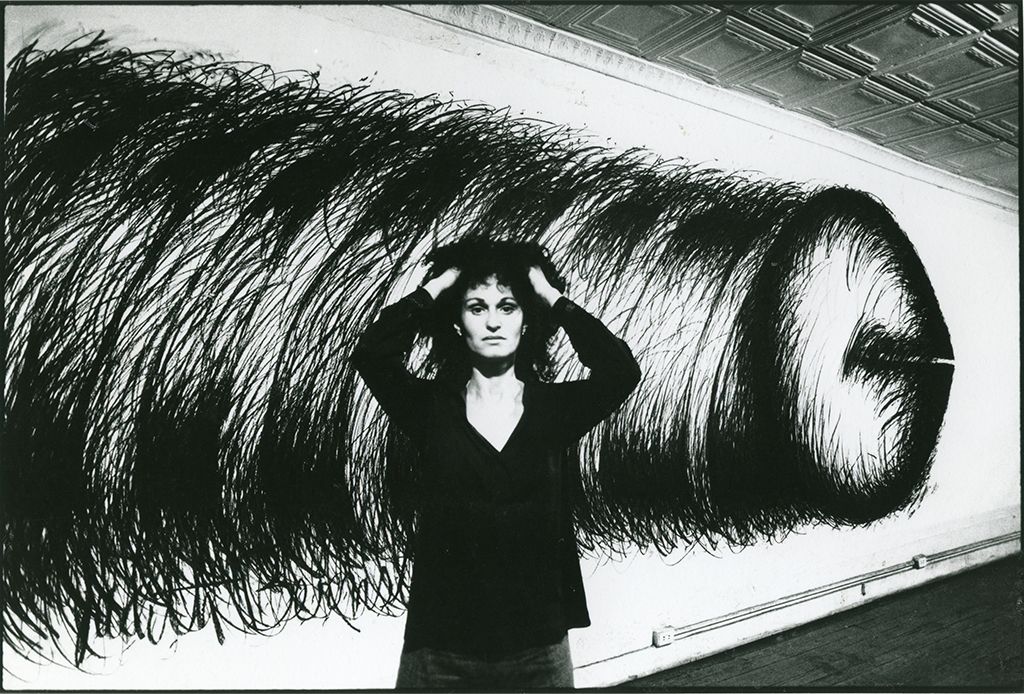Reading Sex Objects / Reading Surfaces
Red and white bars alternate unevenly to form the ground of a painting by Judith Bernstein, Vietnam Salute, from 1967. Black paint meant to border the work’s central panel—a grid of white stars on navy—spills and drips, excessive of its task. A phallic form sprawls across this hastily constructed ground, emerging from a mess of red paint that does not look clean enough to be merely blood. The word “Vietnam” hangs awkwardly, broken at its center, on the margins of the mess, while Bernstein has scrawled its companion, “Salute,” more coherently across its bottom edge.
Vietnam Salute—like many of Bernstein’s work from the Fuck Vietnam series—is a mixed media painting. It has no clear surface to read. The phallic form in its center is an object made from a tightly rolled American flag. Several smaller cloth flags are also pasted onto the painting. Fabric is bunched beneath the phallus, both cushioning its sheath protectively and extending its protrusion into the viewer’s space. The work could depict either wound or womb, either muddy amniotic fluid or the bloody discharge of a disemboweled person.







